James Humbert Craig RUA,RHA (1878 - 1944) The Crolly,Co. Donegal Oil on canvas, 50.8 x 61cm (20 x 24'') Signed Provenance: Purchased from the Victor Waddington Galleries 1940 by the current owners' father and thence by descent. Exhibited: 1939 The RHA Annual Exhibition Cat. No. 365; 1977 The Wexford Arts Centre, ''Irish Art from Private Collections 1870 - 1930'' Cat. No. 45; 1982 Bank of Ireland Exhibition Hall , Baggot Street, Dublin ''Collectors Choice'' Exhibition presented by The Friends of St. Patricks Hospital Cat. No. 20 Literature:''Irish Art and Modernism'' by Dr SB Kennedy 1991 P 177 (Illustrated P159) J. H. Craig was one of a group of Ulster-born painters-Paul Henry Frank McKelvey and Charles Lamb are the best known of the others-who in a large measure determined the development of landscape painting in Ireland in the inter-war years. But unlike his contemporaries, Craig's interest lay in the landscape itself and he was indifferent to a human presence. But he so stamped his view on the landscape of counties Donegal and Antrim that, even today, it is difficult to go there and not see things through his eyes. A keen fisherman, Craig had an angler's feel for the landscape, reacting directly to it and working quickly in a loose Impressionist manner typified, as his friend John Hewitt noted, by 'the swift notation of the insistent effect, the momentary flicker, the flash of light, the passing shadow' (Hewitt, Art in Ulster: 1, Belfast, 1977, p. 83). The Crolly, Co. Donegal, well illustrates these characteristics and is typical of Craig's work of the 1930s, a time when he produced some of his most memorable compositions. The scattered habitation caught in the distant sunlight and the emphasis given to the sky-the clouds flinging their dark shadows over the landscape and bringing to it a sense of grandeur-shows, too, the influence of Paul Henry on Craig in these years. Craig often made use of a palette knife which at times gives his work a somewhat monumental effect, as can be seen in the middle distance of this painting where one is acutely aware of the soft bogland which has been eroded over the years by the meandering stream. Dated 1935-37 on stylistic grounds. Dr. S.B. Kennedy, May 2012 James Humbert Craig RUA,RHA (1878 - 1944) The Crolly,Co. Donegal Oil on canvas, 50.8 x 61cm (20 x 24'') Signed Provenance: Purchased from the Victor Waddington Galleries 1940 by the current owners' father and thence by descent. Exhibited: 1939 The RHA Annual Exhibition Cat. No. 365; 1977 The Wexford Arts Centre, ''Irish Art from Private Collections 1870 - 1930'' Cat. No. 45; 1982 Bank of Ireland Exhibition Hall , Baggot Street, Dublin ''Collectors Choice'' Exhibition presented by The Friends of St. Patricks Hospital Cat. No. 20 Literature:''Irish Art and Modernism'' by Dr SB Kennedy 1991 P 177 (Illustrated P159) J. H. Craig was one of a group of Ulster-born painters-Paul Henry Frank McKelvey and Charles Lamb are the best known of the others-who in a large measure determined the development of landscape painting in Ireland in the inter-war years. But unlike his contemporaries, Craig's interest lay in the landscape itself and he was indifferent to a human presence. But he so stamped his view on the landscape of counties Donegal and Antrim that, even today, it is difficult to go there and not see things through his eyes. A keen fisherman, Craig had an angler's feel for the landscape, reacting directly to it and working quickly in a loose Impressionist manner typified, as his friend John Hewitt noted, by 'the swift notation of the insistent effect, the momentary flicker, the flash of light, the passing shadow' (Hewitt, Art in Ulster: 1, Belfast, 1977, p. 83). The Crolly, Co. Donegal, well illustrates these characteristics and is typical of Craig's work of the 1930s, a time when he produced some of his most memorable compositions. The scattered habitation caught in the distant sunlight and the emphasis given to the sky-the clouds flingi
James Humbert Craig RUA,RHA (1878 - 1944) The Crolly,Co. Donegal Oil on canvas, 50.8 x 61cm (20 x 24'') Signed Provenance: Purchased from the Victor Waddington Galleries 1940 by the current owners' father and thence by descent. Exhibited: 1939 The RHA Annual Exhibition Cat. No. 365; 1977 The Wexford Arts Centre, ''Irish Art from Private Collections 1870 - 1930'' Cat. No. 45; 1982 Bank of Ireland Exhibition Hall , Baggot Street, Dublin ''Collectors Choice'' Exhibition presented by The Friends of St. Patricks Hospital Cat. No. 20 Literature:''Irish Art and Modernism'' by Dr SB Kennedy 1991 P 177 (Illustrated P159) J. H. Craig was one of a group of Ulster-born painters-Paul Henry Frank McKelvey and Charles Lamb are the best known of the others-who in a large measure determined the development of landscape painting in Ireland in the inter-war years. But unlike his contemporaries, Craig's interest lay in the landscape itself and he was indifferent to a human presence. But he so stamped his view on the landscape of counties Donegal and Antrim that, even today, it is difficult to go there and not see things through his eyes. A keen fisherman, Craig had an angler's feel for the landscape, reacting directly to it and working quickly in a loose Impressionist manner typified, as his friend John Hewitt noted, by 'the swift notation of the insistent effect, the momentary flicker, the flash of light, the passing shadow' (Hewitt, Art in Ulster: 1, Belfast, 1977, p. 83). The Crolly, Co. Donegal, well illustrates these characteristics and is typical of Craig's work of the 1930s, a time when he produced some of his most memorable compositions. The scattered habitation caught in the distant sunlight and the emphasis given to the sky-the clouds flinging their dark shadows over the landscape and bringing to it a sense of grandeur-shows, too, the influence of Paul Henry on Craig in these years. Craig often made use of a palette knife which at times gives his work a somewhat monumental effect, as can be seen in the middle distance of this painting where one is acutely aware of the soft bogland which has been eroded over the years by the meandering stream. Dated 1935-37 on stylistic grounds. Dr. S.B. Kennedy, May 2012 James Humbert Craig RUA,RHA (1878 - 1944) The Crolly,Co. Donegal Oil on canvas, 50.8 x 61cm (20 x 24'') Signed Provenance: Purchased from the Victor Waddington Galleries 1940 by the current owners' father and thence by descent. Exhibited: 1939 The RHA Annual Exhibition Cat. No. 365; 1977 The Wexford Arts Centre, ''Irish Art from Private Collections 1870 - 1930'' Cat. No. 45; 1982 Bank of Ireland Exhibition Hall , Baggot Street, Dublin ''Collectors Choice'' Exhibition presented by The Friends of St. Patricks Hospital Cat. No. 20 Literature:''Irish Art and Modernism'' by Dr SB Kennedy 1991 P 177 (Illustrated P159) J. H. Craig was one of a group of Ulster-born painters-Paul Henry Frank McKelvey and Charles Lamb are the best known of the others-who in a large measure determined the development of landscape painting in Ireland in the inter-war years. But unlike his contemporaries, Craig's interest lay in the landscape itself and he was indifferent to a human presence. But he so stamped his view on the landscape of counties Donegal and Antrim that, even today, it is difficult to go there and not see things through his eyes. A keen fisherman, Craig had an angler's feel for the landscape, reacting directly to it and working quickly in a loose Impressionist manner typified, as his friend John Hewitt noted, by 'the swift notation of the insistent effect, the momentary flicker, the flash of light, the passing shadow' (Hewitt, Art in Ulster: 1, Belfast, 1977, p. 83). The Crolly, Co. Donegal, well illustrates these characteristics and is typical of Craig's work of the 1930s, a time when he produced some of his most memorable compositions. The scattered habitation caught in the distant sunlight and the emphasis given to the sky-the clouds flingi
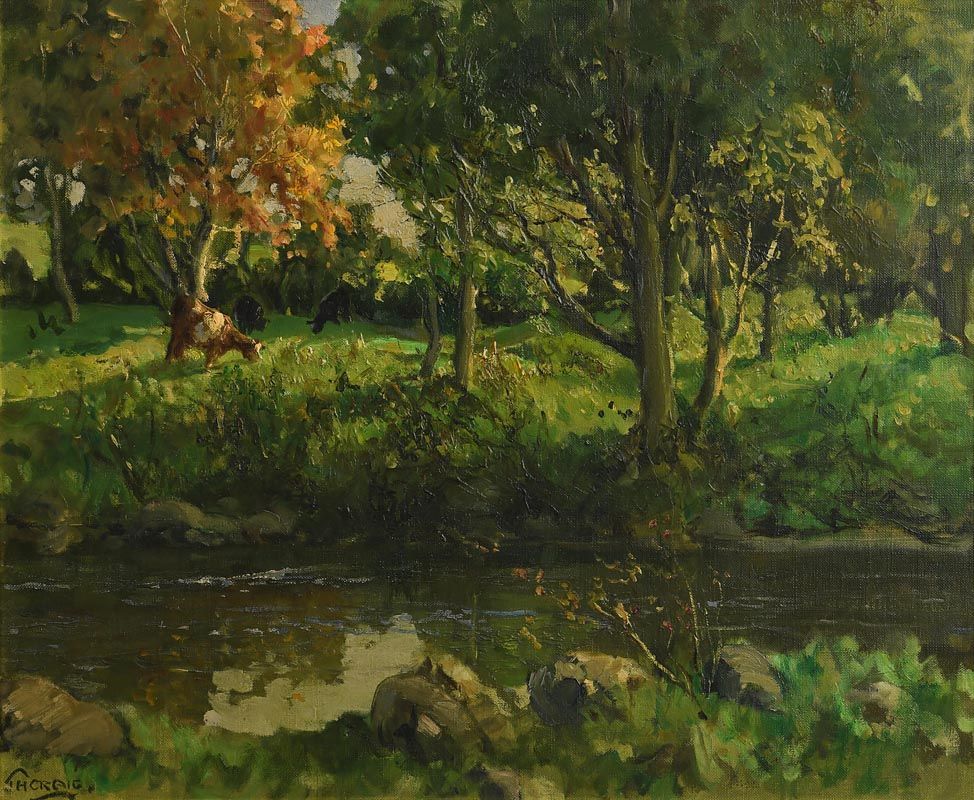

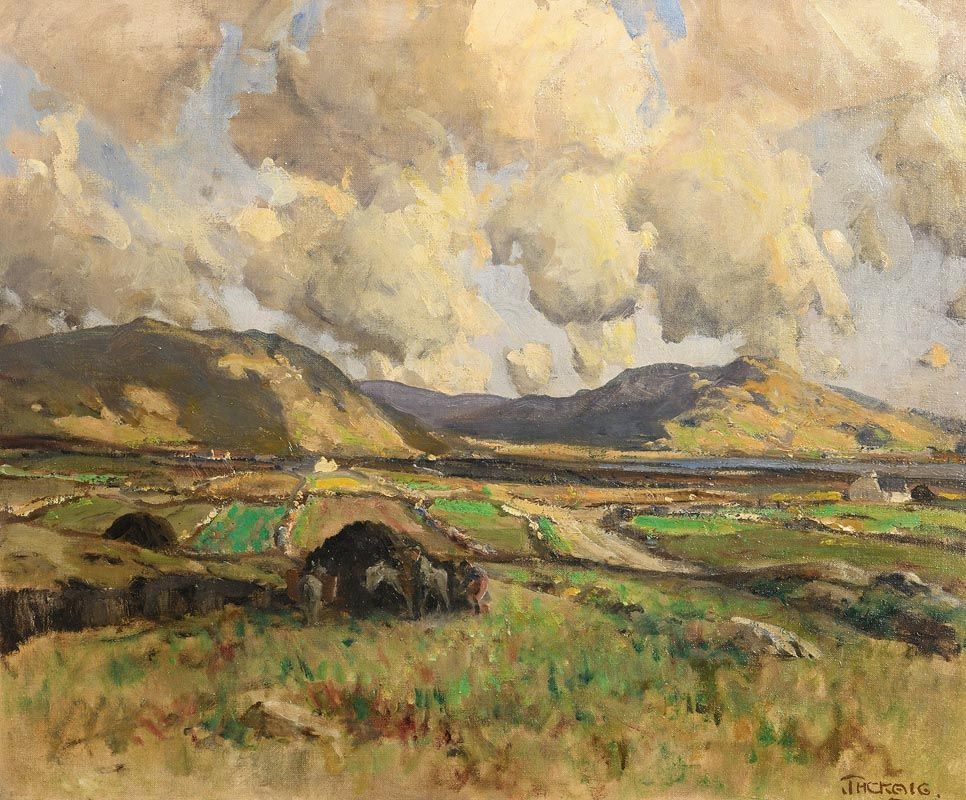
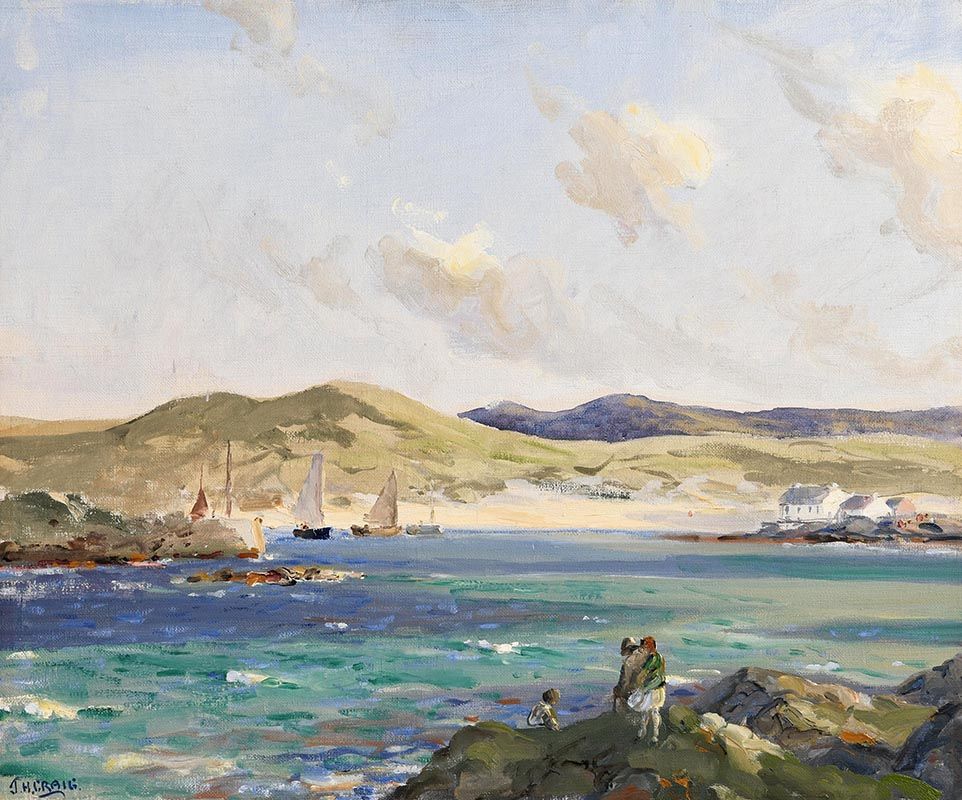
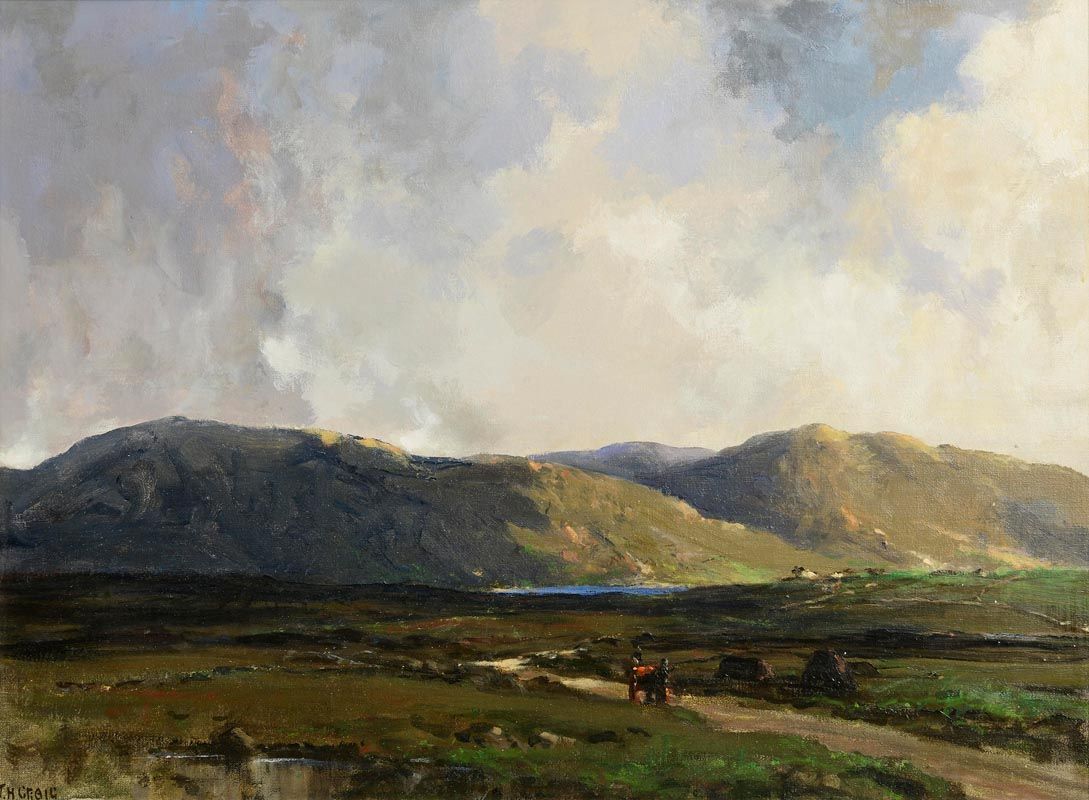
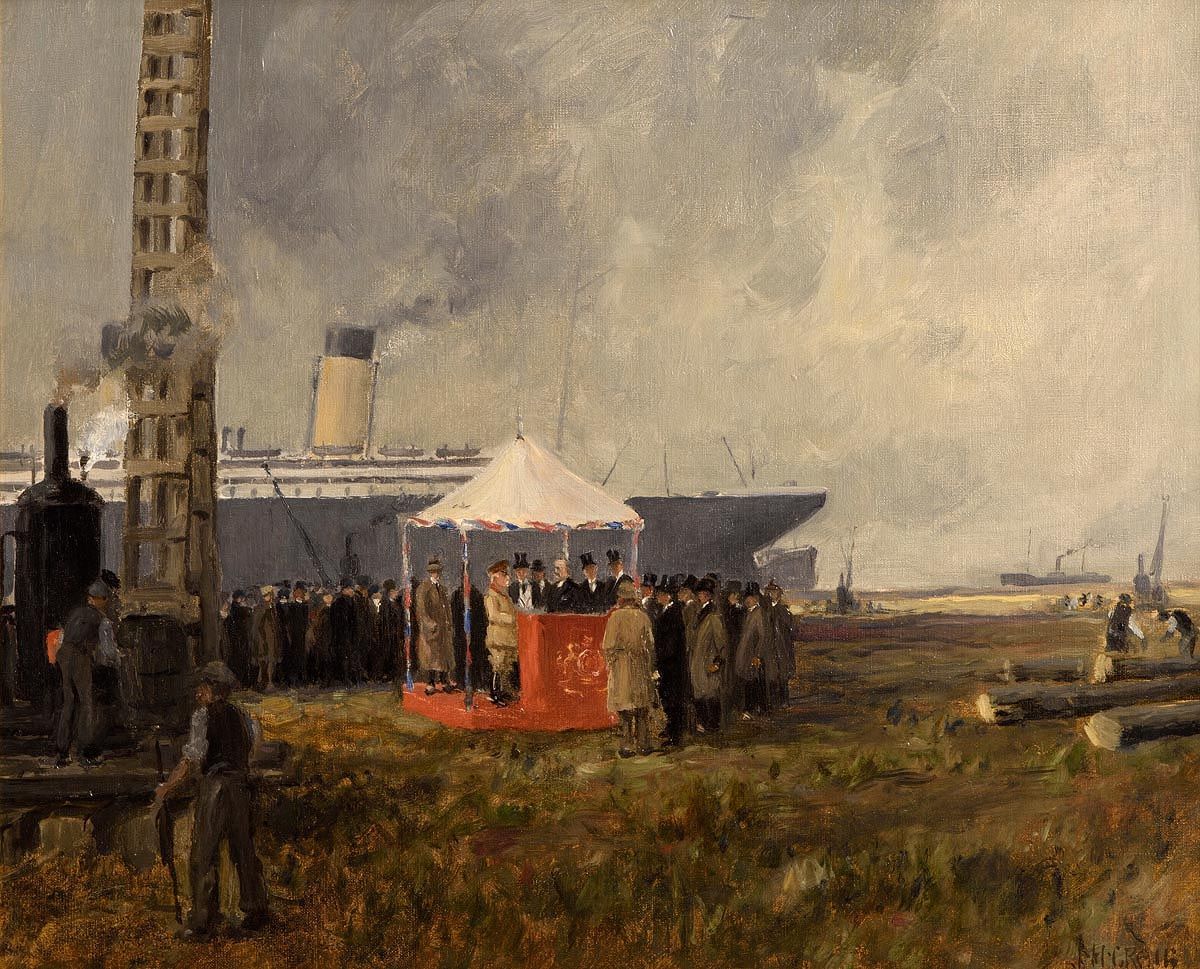
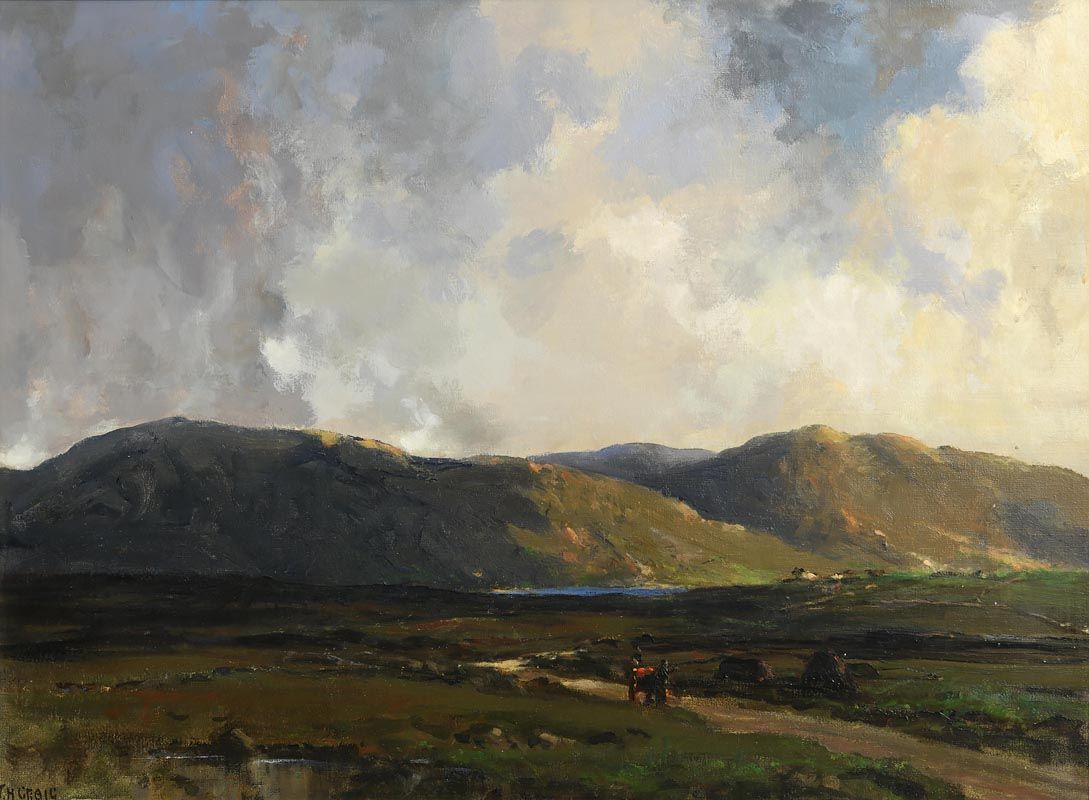
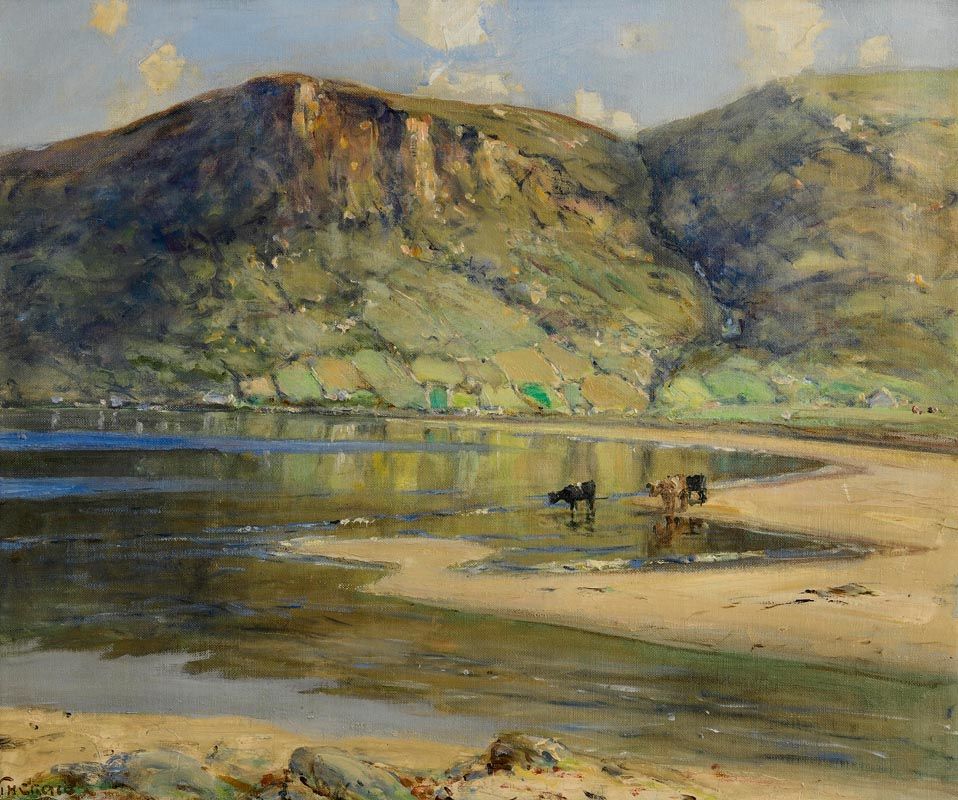
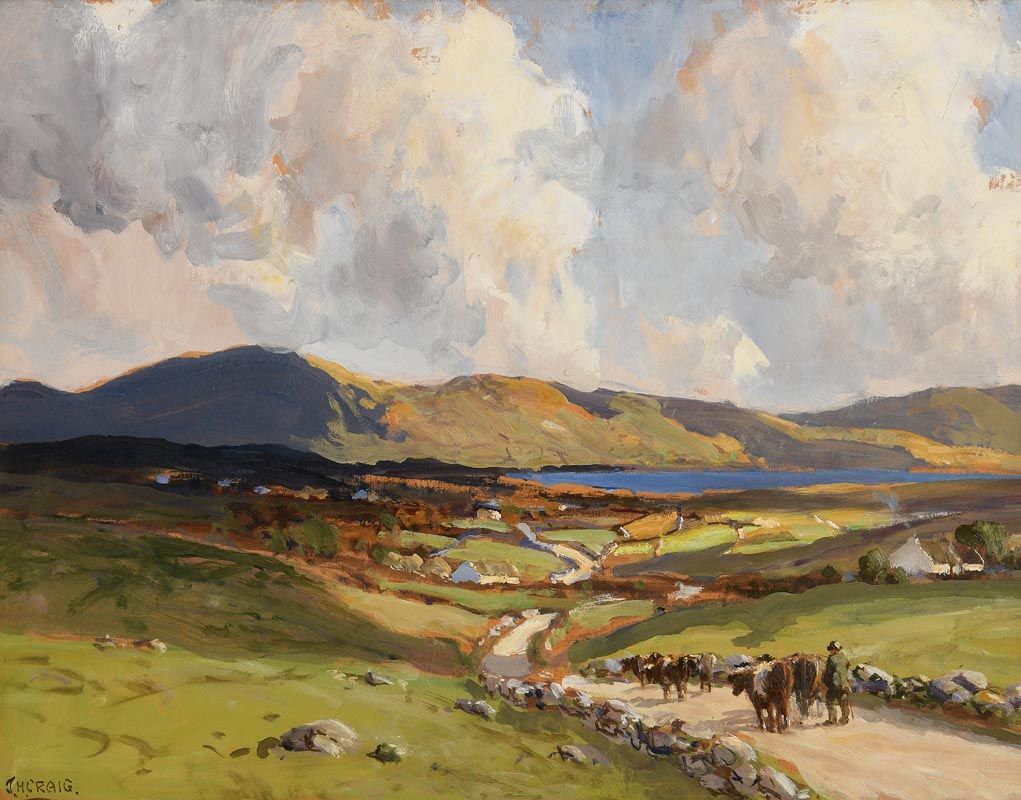
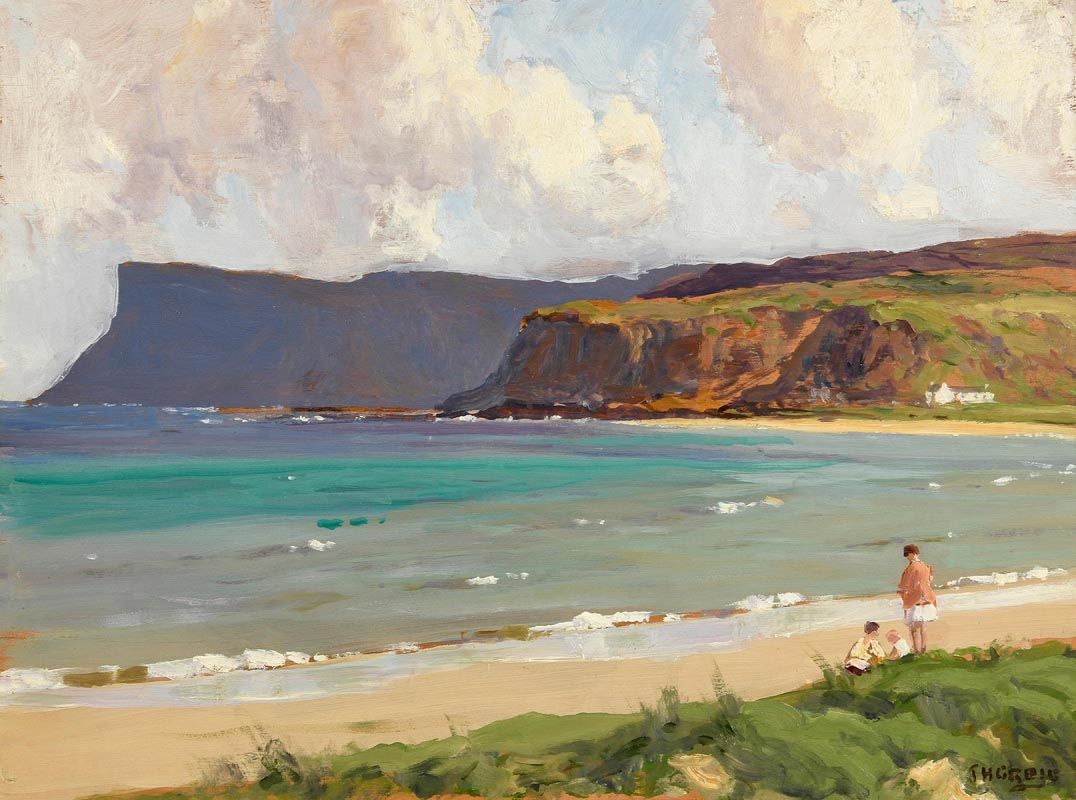

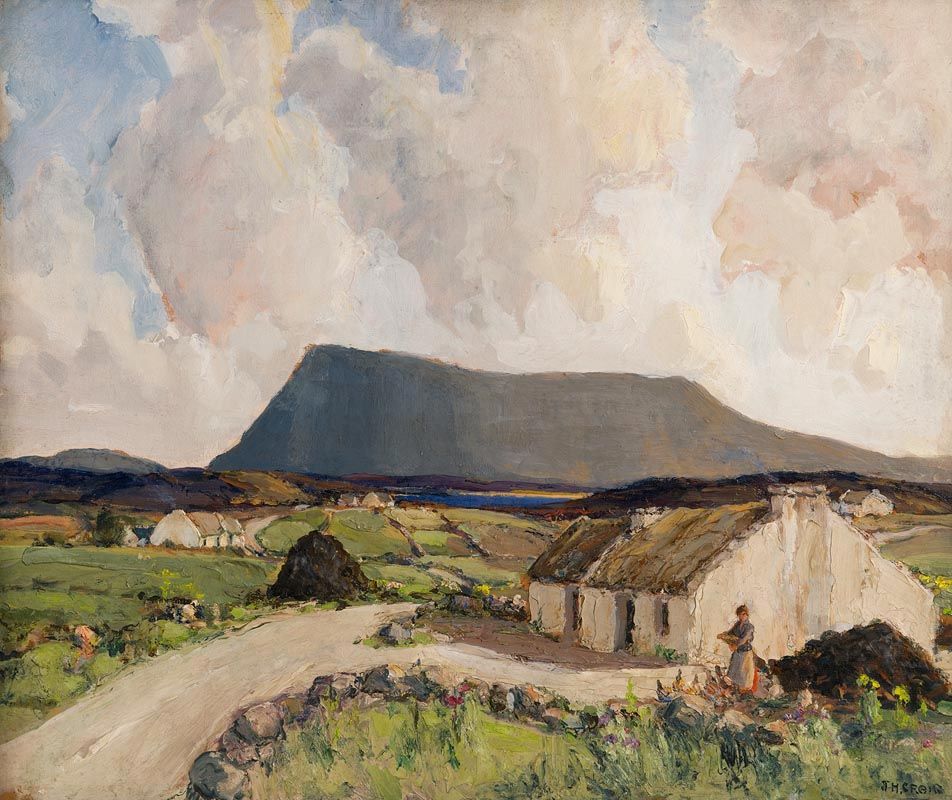
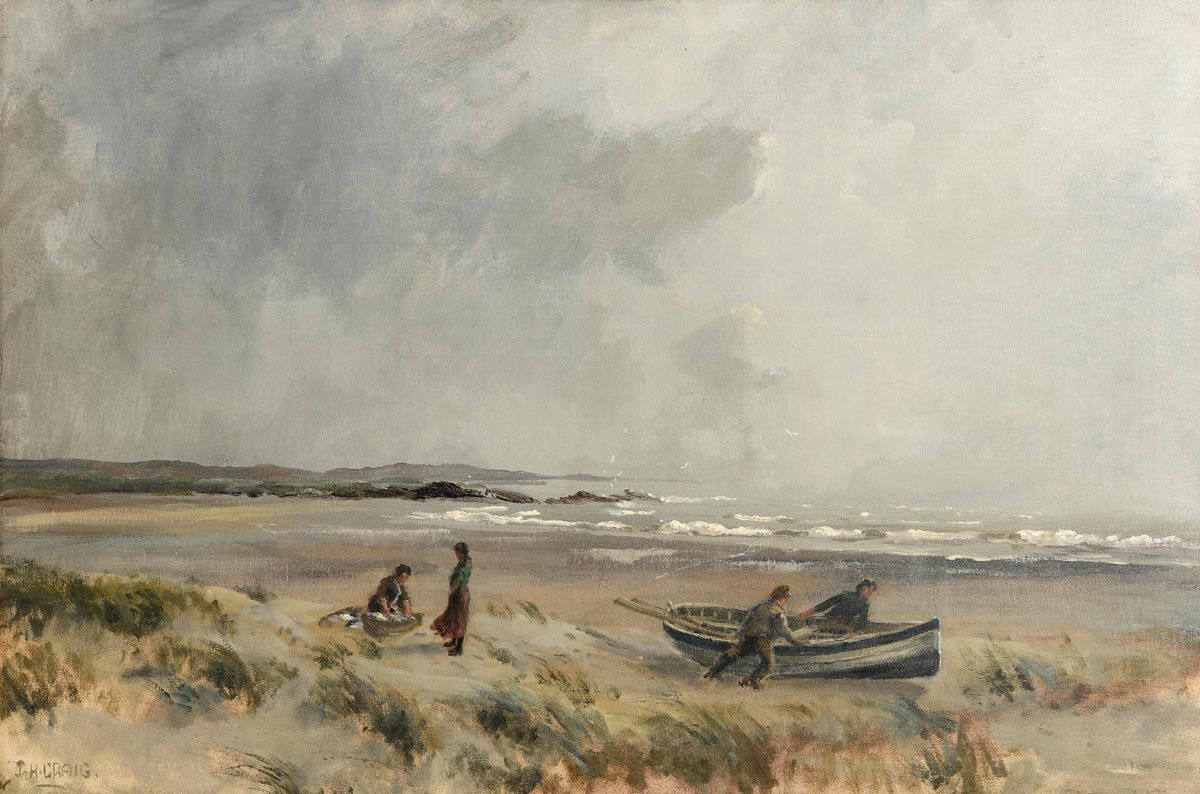
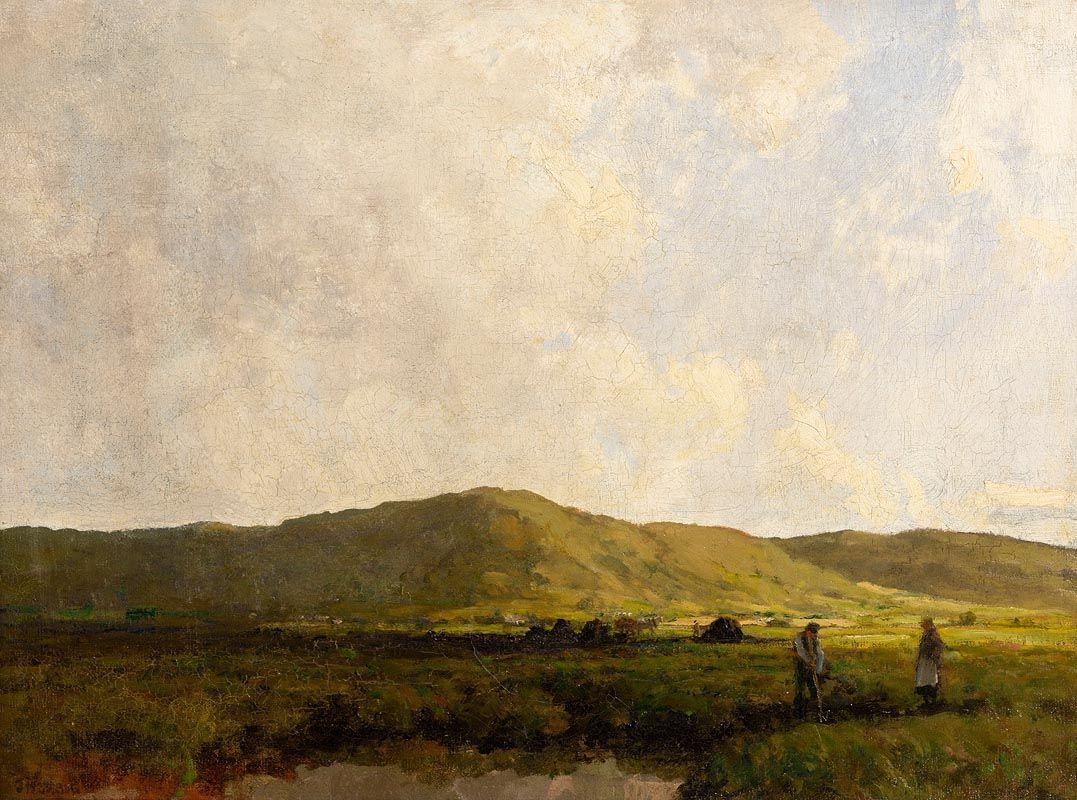
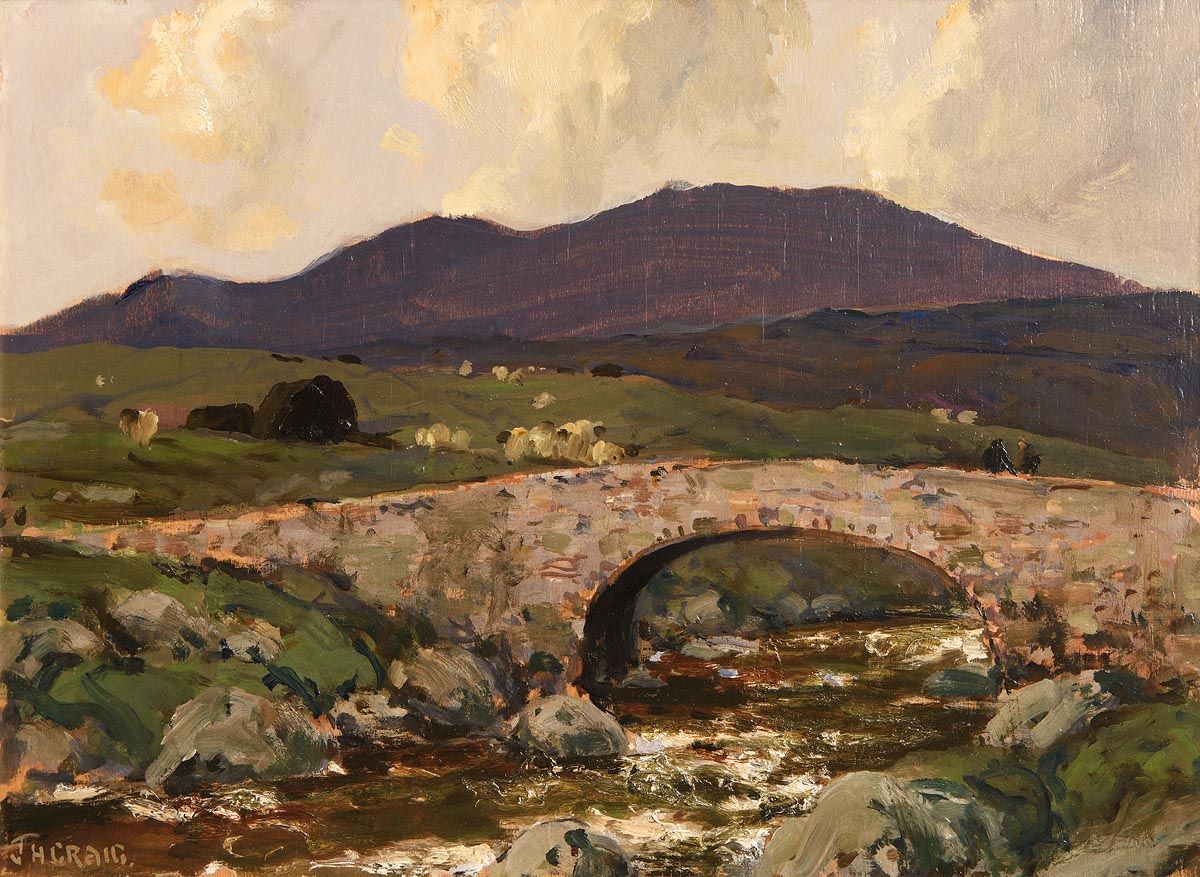
Testen Sie LotSearch und seine Premium-Features 7 Tage - ohne Kosten!
Lassen Sie sich automatisch über neue Objekte in kommenden Auktionen benachrichtigen.
Suchauftrag anlegen